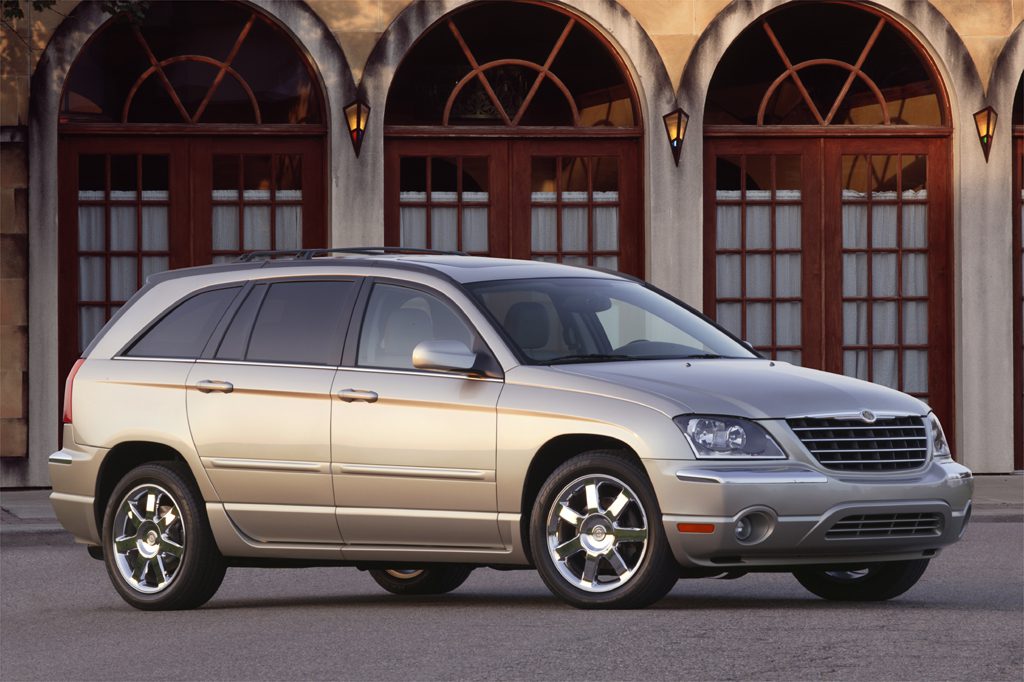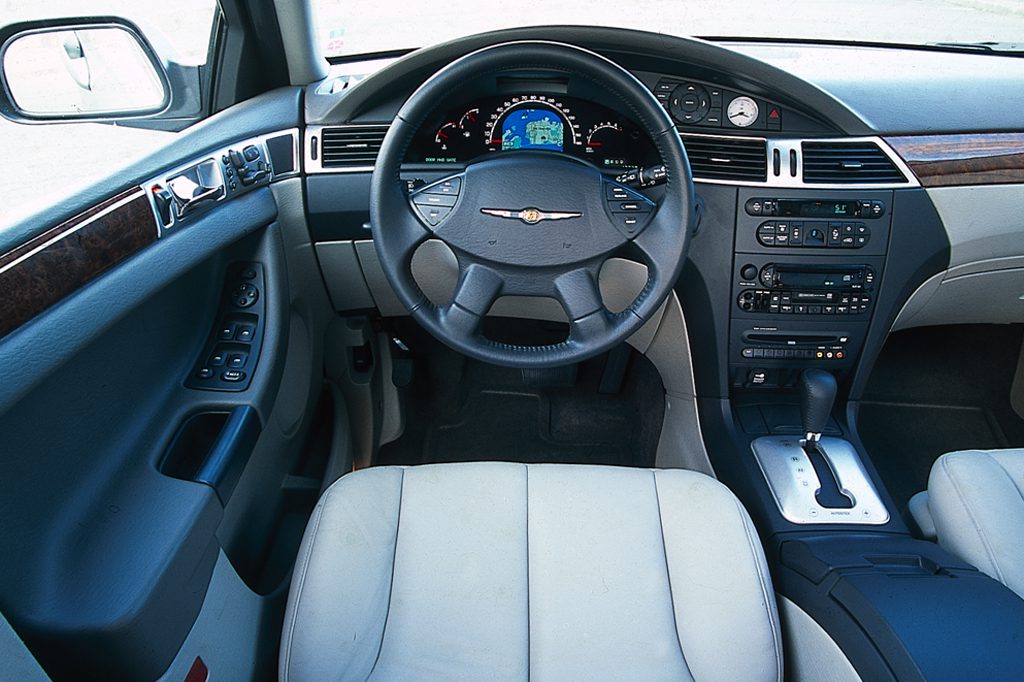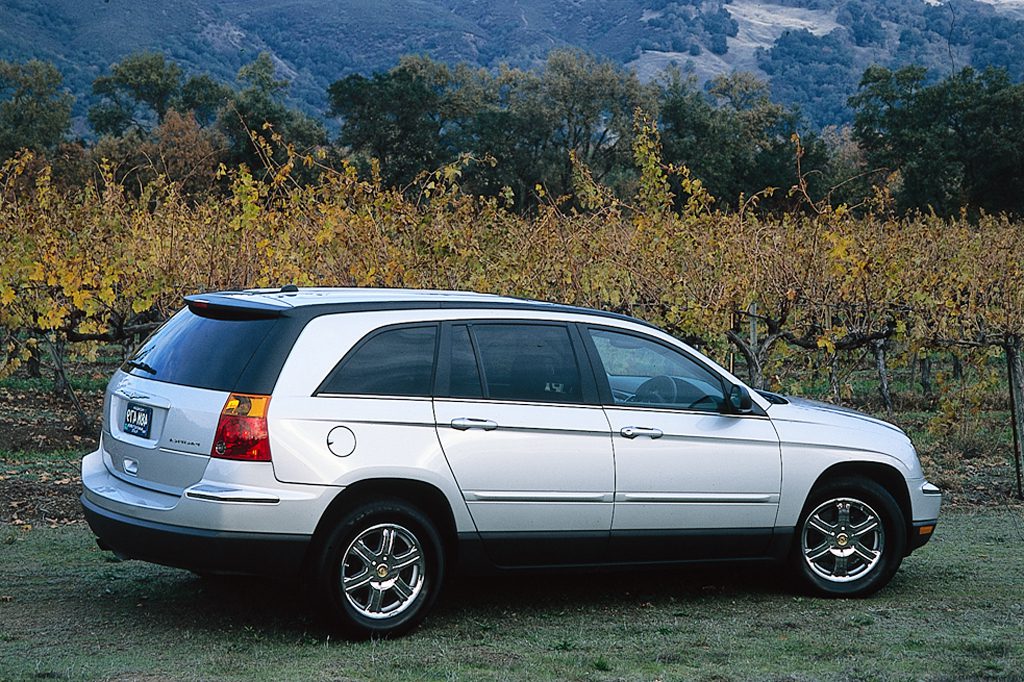| Midsize SUV; Built in Canada |
|
|
| Good condition price range: $5,200 – $16,000* |

2005 Chrysler Pacifica

2005 Chrysler Pacifica

2004 Chrysler Pacifica

2004 Chrysler Pacifica
| Pros: |
|
| Cons: |
|
Pacificas aren’t as roomy inside as their generous exterior dimensions suggest. Acceleration is unexceptional, and they move like a heavy minivan. Still, a Pacifica is more rational than most any SUV and more stylish than a minivan, exuding some upscale appeal. Sales have been slower than expected, so secondhand prices might be appealing.
Overview
Midsize in dimensions, Pacifica was among the new breed of crossover four-door wagons that aimed to blend traits of cars, sport-utility vehicles, and minivans. To that end, it offered three rows of seats for six-passenger capacity, a suspension designed to provide carlike road manners, and either front-drive or available all-wheel drive. Rivals include the Ford Freestyle, Honda Pilot, and Toyota Highlander.
Taller than a car, Pacifica stood lower than most SUVs. Built with an exceptionally wide body, it was nearly as long as Chrysler’s Town & Country minivan. The sole powertrain was a 250-horsepower 3.5-liter V6, driving a four-speed automatic transmission that incorporated a manual shift gate. Pacificas could have front-wheel drive with optional traction control, or all-wheel drive that lacked low-range gearing.
Antilock four-wheel disc brakes, 17-inch wheels, and a load-leveling rear suspension were standard. Seating consisted of buckets in the first and second rows, and a third row split bench. Second- and third-row seats folded but did not remove.
A driver’s knee airbag was standard. Head-protecting side curtain airbags that covered all three rows, power-adjustable pedals, and a tire-pressure monitor were standard on AWD models, and optional with front-drive. Additional options included leather upholstery, heated first- and second-row seats, a sunroof, power liftgate, navigation and DVD entertainment systems, and satellite radio.
Yearly Updates
| 2005 Pacifica Rather than the single version of 2004, Chrysler adopted a three-model lineup for 2005, adding a lower-priced Pacifica and an upscale luxury edition. This year’s Touring model, introduced as an early 2005, was essentially carryover of the original standard-trim Pacifica. Chrysler then added a base model and an AWD-only Limited edition. The base Pacifica contained a second-row bench for five-passenger capacity. Touring and Limited models held two second-row buckets plus a third-row two-place bench, for six-passenger seating. Such features as leather upholstery and a power liftgate were not offered for the base model. A 215-horsepower 3.8-liter V6 powered the new base front-drive model, but others retained the 250-hp 3.5-liter V6. Base and Touring Pacificas rode on 17-inch wheels, but the Limited got 19s. Side-curtain airbags were standard in the Limited and optional for others. |
| 2006 Pacifica For 2006, Chrysler dropped the 3.8-liter engine for base front-drive models, giving all Pacificas the same 250-hp 3.5-liter V6. |
| 2007 Pacifica Pacifica got a minor facelift and a powertrain revamp for 2007. For 2007, the front-drive base model got a 200-hp 3.8-liter V6 and a 4-speed automatic transmission. Other Pacificas had a 255-hp 4.0-liter V6 with a 6-speed automatic. All 2006 models had a 250-hp 3.5-liter V6 and a 4-speed automatic. Also for ’07, traction control moved from optional to standard, and antiskid control, formerly unavailable, became standard. |
| 2008 Pacifica The 2008 Chrysler Pacifica carried over with no major changes for what Chrysler says is this slow-selling wagon’s final model year. |
